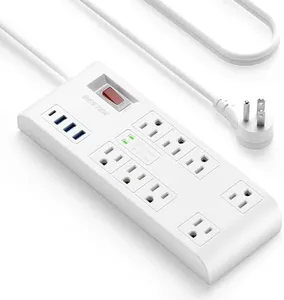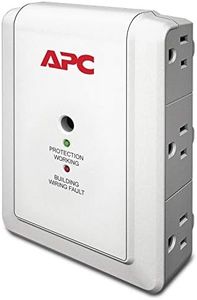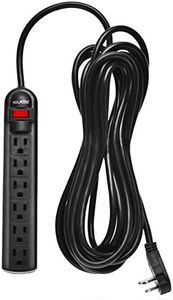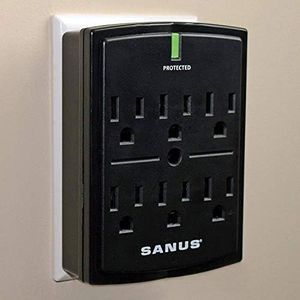Buying Guide for the Best Apc Surge Protectors
When it comes to protecting your electronic devices from power surges, an APC surge protector is a reliable choice. Surge protectors are essential for safeguarding your valuable electronics from unexpected voltage spikes that can cause damage or even destroy your devices. To choose the best surge protector for your needs, it's important to understand the key specifications and how they relate to your specific requirements.Joules RatingThe joules rating indicates the amount of energy the surge protector can absorb before it fails. This is important because a higher joules rating means better protection for your devices. Surge protectors typically range from 200 to over 4000 joules. For basic protection of small electronics, a rating of 600-1000 joules is sufficient. For more sensitive or expensive equipment like computers, home theater systems, or gaming consoles, look for a rating of 1000-2000 joules or higher. Choose a surge protector with a joules rating that matches the value and sensitivity of the devices you want to protect.
Number of OutletsThe number of outlets on a surge protector determines how many devices you can plug in at once. This is important for ensuring you have enough capacity for all your electronics. Surge protectors can have as few as 2 outlets or as many as 12 or more. If you only need to protect a couple of devices, a surge protector with 4-6 outlets should suffice. For a home office or entertainment center with multiple devices, consider a surge protector with 8-12 outlets. Make sure to count the number of devices you plan to connect and choose a surge protector with a few extra outlets for future needs.
Clamping VoltageClamping voltage, also known as the let-through voltage, is the voltage level at which the surge protector starts to block or divert excess electricity. This is important because a lower clamping voltage means better protection for your devices. Common clamping voltages are 330V, 400V, and 500V. For the best protection, look for a surge protector with a clamping voltage of 330V. If you are protecting less sensitive equipment, a clamping voltage of 400V or 500V may be adequate. Choose a clamping voltage based on the sensitivity of the devices you are protecting.
Response TimeResponse time refers to how quickly the surge protector reacts to a power surge. This is important because a faster response time means your devices are protected more quickly. Surge protectors typically have response times measured in nanoseconds (ns). A response time of 1 nanosecond or less is ideal for providing the best protection. If you are protecting highly sensitive or valuable electronics, prioritize a surge protector with a very fast response time. For less critical devices, a slightly slower response time may still offer adequate protection.
Indicator LightsIndicator lights on a surge protector show the status of the protection and grounding. This is important because it helps you know if the surge protector is functioning properly. Most surge protectors have at least one light to indicate that protection is active. Some models also have additional lights to show proper grounding or other status information. Choose a surge protector with clear and easy-to-read indicator lights so you can quickly verify that your devices are protected. If you want more detailed status information, look for models with multiple indicator lights.
Cord LengthThe cord length of a surge protector determines how far it can be placed from the wall outlet. This is important for ensuring you can position the surge protector where it is most convenient. Cord lengths typically range from 2 feet to 12 feet or more. For use on a desk or near an outlet, a shorter cord of 2-4 feet may be sufficient. For more flexibility in placement, such as behind furniture or in a larger room, consider a cord length of 6-12 feet. Choose a cord length that allows you to place the surge protector in the most practical location for your setup.











